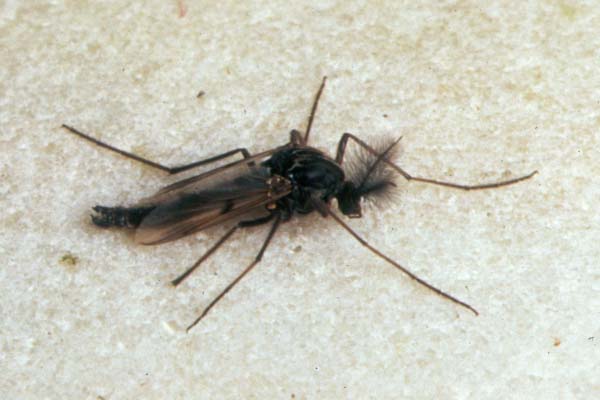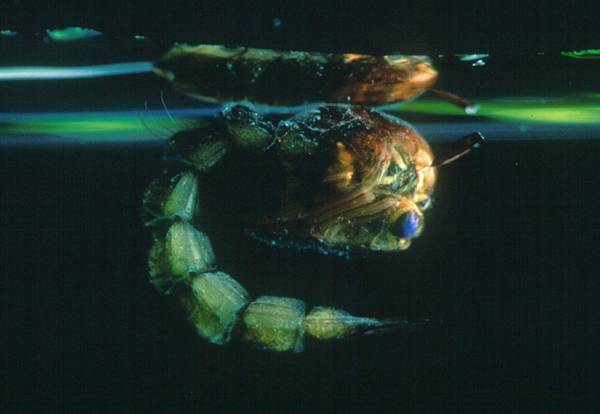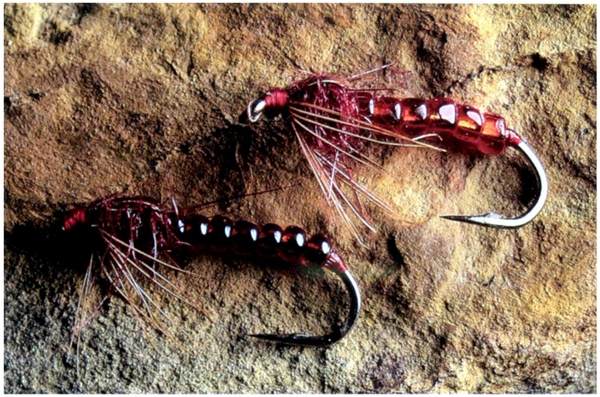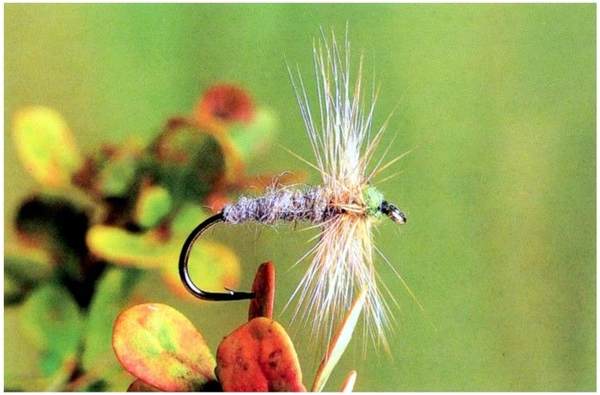Chironomus plumosus - Buzzer Midge
Phylum: Arthropoda - Class: Insecta - Order: Diptera - Family: Chironomidae

There are many species in the genus Chironomus, varying in size from two or three mm long to 20 or 30 mm long. One of the most common species is Chironomus plumosus. Its colours vary tremendously according to the nature of its habitat, and you will find green, ginger, brown and almost black sub-species.
Larva

From tiny eggs, chironomid larvae, called bloodworms, develop. Many are red, but you will also find green, brown and even black 'bloodworms'. They live on the bed of a river or lake in tube-like burrows made from detritus. Some bloodworms do emerge from their tunnels, occasionally drifting to the surface where they are easy pickings for trout.

Pupa
The pupae of buzzer midges drift to the surface, where they rest before the adult fly emerges. At this stage they are extremely vulnerable to patrolling trout. Intense evening rises, and occasionally morning rises too, are caused by trout feeding on emerging buzzers.

Adult
Adult buzzer midges emerge rapidly from the water, leaving their pupal shucks floating on the surface. They fly in large swarms, often making a loud buzzing sound even though an individual buzzed is barely audible on its own.
When the adults return to the water to lay their eggs, they are again vulnerable to surface-feeding trout.

Fishing flies
An effective artificial bloodworm is John Wilshaw's pattern simply called 'Bloodworm'.
After a few weeks, the bloodworm will be typically 10 to 15 mm long and it begins to pupate.

The pupae look quite different from the larvae, but you may see 'bloodwormy buzzers' at a stage between larva and pupa. Steve Parton has devised some very useful imitative patterns (shown here) of this intermediate stage.

Peter O'Reilly has devised a very effective imitation of one particular member of the group of sub-species called the chironomid midges; he calls it the Campto Midge, after an Irish lake fishery where it is particularly effective.
Excited at the prospect of flyfishing? So are we, and we're pretty sure you would find the Winding River Mystery trilogy of action-packed thrillers gripping reading too. Dead Drift, Dead Cert, and Dead End are Pat O'Reilly's latest river-and-flyfishing based novels, and now they are available in ebook format. Full details on our website here...
Buy each book for just £4.96 on Amazon...
Please Help Us: If you have found this information interesting and useful, please consider helping to keep First Nature online by making a small donation towards the web hosting and internet costs.
Any donations over and above the essential running costs will help support the conservation work of Plantlife, the Rivers Trust and charitable botanic gardens - as do author royalties and publisher proceeds from books by Pat and Sue.
